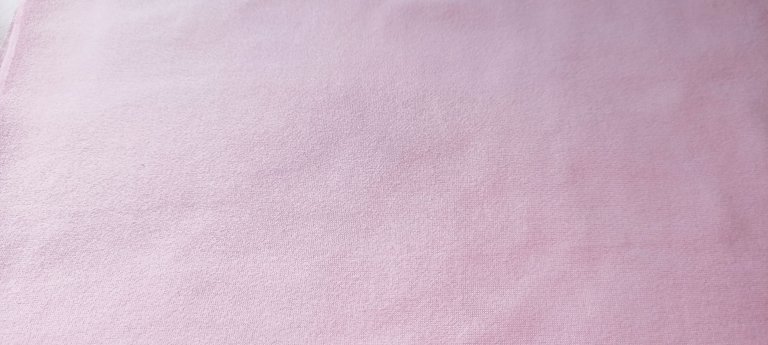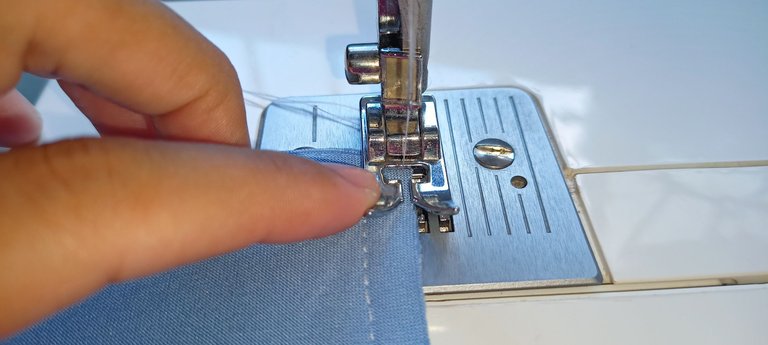
English
Hello my fellow artists! 💝 How is your start of the week? Wishing you are very well and enjoying every present process.
Today I'm not bringing you a sewing tutorial, rather I want to tell you a little bit about my beginnings in this art and some tips I've been learning while making underwear. If you've been itching to get started in the world of making lingerie, these tips might help you. Well, I hope so 😅
When I started sewing I didn't understand a lot of things about sewing. I didn't even know how to operate the machine, how to thread the thread, why the fabric is folded in half to cut it, I couldn't make sense of the pattern, in short... there were so many details. There were several fabrics that I tore, that I didn't sew well, the thread that I tangled, the times that I unpicked and that I wanted to abandon sewing forever and ever. Then I remember how much I love sewing and it goes away 🙈
Español
¡Hola mis compañeros artistas! 💝 ¿Qué tal su inicio de semana? Deseando que estén muy bien y disfrutando de cada proceso presente.
Hoy no les traigo un tutorial de costura, más bien quiero hablarles un poco sobre mis inicios en este arte y algunos tips que he ido aprendiendo al hacer ropa interior. Si has tenido ganas de iniciar en el mundo de la confección de ropa íntima, estos consejos podrían ayudarte. Bueno, eso espero 😅
Cuando yo empecé a coser no entendía muchas cosas de la costura. No sabía ni manejar la máquina, como enhebrar el hilo, por qué la tela se dobla a la mitad para cortarla, tampoco le hallaba sentido al patrón, en fin... eran tantos detalles. Fueron varias las telas que rompí, que no cosí bien, el hilo que enrede, las veces que descosí y que quise abandonar para siempre y por siempre la costura. Luego recuerdo cuánto amo la costura y se me pasa 🙈
 |  |
|---|
With time and mistakes (that's why they are so necessary) I have gained some experience and skill in sewing. So I want to share with you some of the things this art has taught me.
Talking specifically about underwear, the first thing I like to take into account is the quality of the fabric. It is always good to go for one that is mostly cotton. If you are in Venezuela, there is a fabric called Micro 180. It is soft, so you can hardly feel it on your skin, has good elasticity and is resistant.
There are others that can be used for underwear as well, such as Micro Peach, 100% cotton, pajama fabric, some Sport or lycra. The important thing is softness and elasticity.
Con el tiempo y los errores (por eso es que son tan necesarios) he ido logrando cierta experiencia y destreza al coser. Así que quiero compartir con ustedes algunas de las cosas que este arte me ha enseñado.
Hablándoles específicamente de la ropa interior, lo primero que me gusta tomar en cuenta es la calidad de la tela. Siempre es bueno apostar por una que sea mayormente algodón. Si estás en Venezuela hay una tela que se llama Micro 180. Para mí esta es la mejor. Es suave, por eso casi ni se siente en la piel, tiene buena elasticidad y es resistente.
Hay otras que sirven para ropa interior también, como la Micro Durazno, algodón 100%, tela de pijamas, algunas Sport o la licra. Lo importante es la suavidad y la elasticidad.
 |  |
|---|
Simple and practical tools.
I could tell you that for me it has been indispensable:
A scissors that cuts very well ✂️ The more effective it is, the faster I cut and the less tired I get. Likewise, it happens if I have a chalk that marks well, pins with a sharp point and a tape measure where I can clearly see the stripes.
A reliable pattern 👚 (not all of them are, although whoever sells them to you tells you otherwise). In my case I have tried, redesigned, tried again, gone crazy and started over many, many times. Thank God, I always count on my good friend Carmen, who has good patterns, already tested, and the patience to clarify any doubts.
Specific yarns 🧵 I like to use overlock yarn on the bobbin and regular yarn on the top. With this combination you can climb a mountain, climb a tree or hike in the desert and your garment won't unravel at all.
Herramientas sencillas y prácticas.
Podría decirte que para mí ha sido indispensable:
Una tijera que corte muy bien ✂️ Mientras más efectiva, corto más rápido y me canso menos. Igualmente, sucede si tengo una tiza que marque bien, alfileres con punta afilada y una cinta métrica en la que pueda ver claramente las rayitas.
Un patrón confiable 👚 (no todos lo son, aunque quien te los vende te dice lo contrario). En mi caso he probado, rediseñado, vuelto a probar, enloquecer y empezar de nuevo muchísimas veces. Gracias a Dios, siempre cuento con mi buena amiga Carmen, que tiene buenos patrones, ya comprobados, y la paciencia para aclararme cualquier duda.
Hilos específicos 🧵 Me gusta usar la hilaza o hilo de overlock en la bobina e hilo normal en la parte de arriba. Con esta combinación podrás escalar una montaña, subir a un árbol o caminar por el desierto y tu prenda no se descoserá para nada.
 |  |
|---|

Elastic. There are different types, some can be sewn so that they remain on the outside (they also serve as decoration) and others (the ones I use) are simpler and remain on the inside or hidden. I like it this way because the softness of the fabric is in direct contact with the skin.
Another super important thing I had to learn was that, when stretching the rubber band or elastic, I had to stretch just a little (1 or 2 cm), so when I put on the garment my blood would not stop circulating putting me at risk of a possible amputation 🤣 Just kidding.
Needles. Each one has its numbering depending on the fabric one is going to sew. For underwear I use number 11 ball point or diamond point.
Elástica. Hay distintos tipos, unas se pueden coser para que queden por fuera (sirven también de decoración) y otras (las que yo uso) son más sencillas y quedan por dentro o escondidas. A mí me gusta así porque la suavidad de tela está en contacto directo con la piel.
Otra cosa súper importante que tuve que aprender fue que, al estirar la goma o elástica, debía estirar solo un poco (1 o 2 cm), así al ponerme la prenda mi sangre no dejaría de circular poniéndome en riesgo de una posible amputación 🤣 Es broma.
Agujas. Cada una tiene su numeración según el tejido que uno vaya a coser. Para la ropa interior uso la número 11 punta de bola o punta de diamante.
 |  |  |
|---|
The finishes of the garment. I learned that, for example, when I sew the elastic I must leave a little bit of fabric towards the edge so that when folding it is well covered. Also, when sewing in zigzag or to finish with the three-beat stitch, I can place the edge of the fabric on the division of the presser foot and it will be a beautiful seam.
Los acabados de la prenda. Aprendí que, por ejemplo, cuando cosa la elástica debo dejar un poquito de tela hacia al borde para que al doblar esta quede bien cubierta. También que al coser en zigzag o para rematar con la puntada de tres tiempos puedo colocar la orilla de la tela en la división del prensatelas y quedará una costura bien bonita.
 |  |  |
|---|
The art of creating through sewing is wonderful, because it makes you believe in yourself and grow in yourself. Besides, you will be able to sell your garments and earn money. It's productive, don't you think?
If you have any tips for me that have helped you in sewing, I'd love for you to share them in the comments.
El arte de crear a través de la costura es maravilloso, pues te hace creer en ti y crecer en ti. Además, podrás vender tus prendas y ganar dinero. Es productivo, ¿No crees?
Si tienes algún consejo para mí que te haya ayudado en la costura, me encantaría que lo compartieras en los comentarios.


Text of my authorship. Photos are my property, taken with my Realme 7 phone. Editing in InShot and Canva. My emoji made in Bitmoji.
Divider created by me in GIMP 💟
Text translated using DeepL.com
Texto de mi autoría. Las fotos son de mi propiedad, tomadas con mi teléfono Realme 7. Edición en InShot y Canva. Mi emoji hecho en Bitmoji.
Divisor creado por mí en GIMP 💟
Texto traducido utilizando DeepL.com

